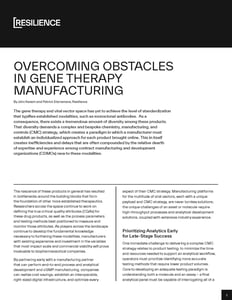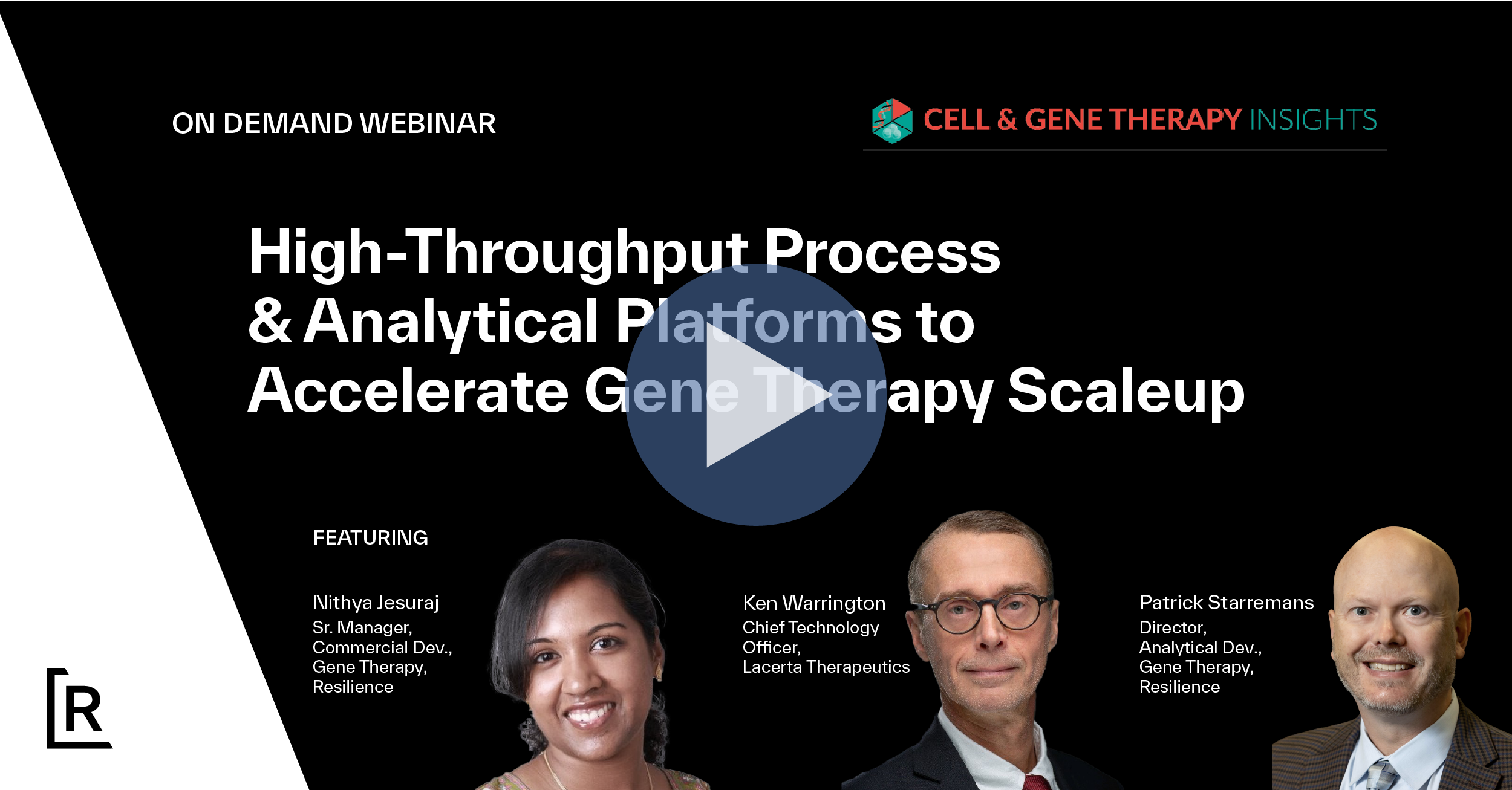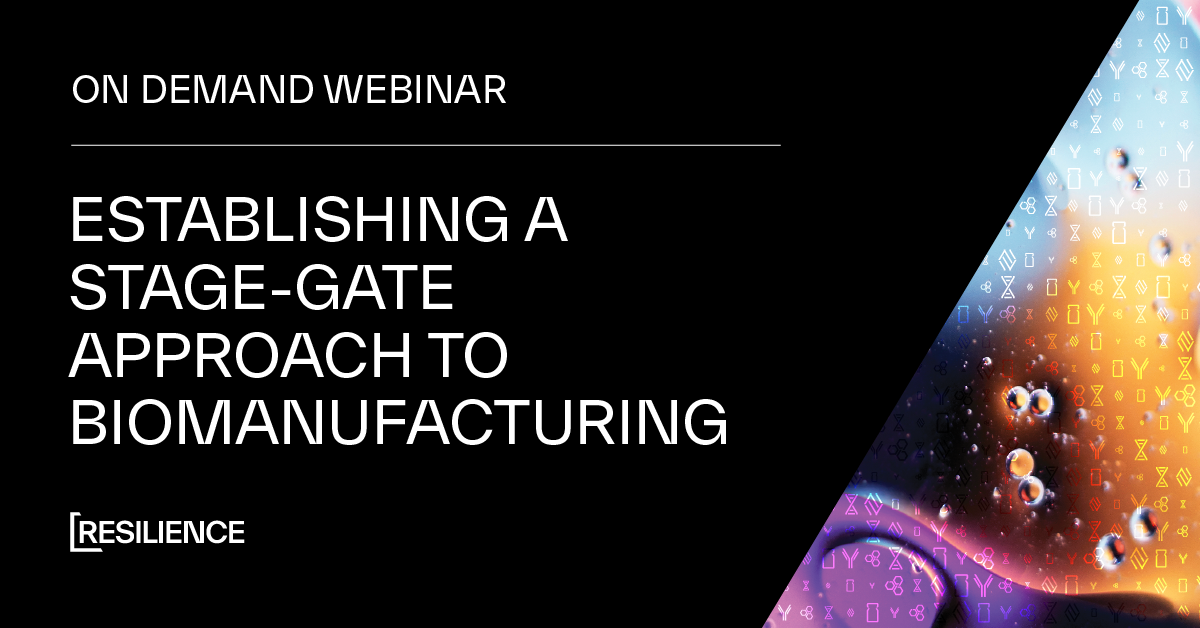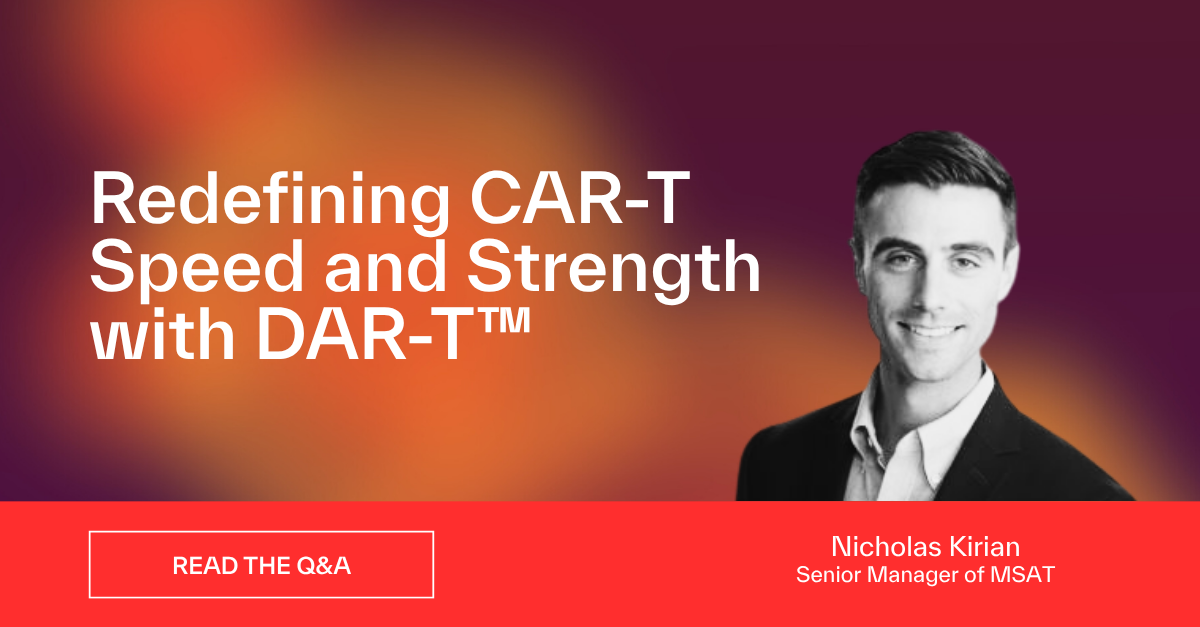
Overcoming Obstacles in Gene Therapy Manufacturing
The gene therapy and viral vector space has yet to achieve the level of standardization that typifies established modalities, such as monoclonal antibodies. As a consequence, there exists a tremendous amount of diversity among these products. That diversity demands a complex and bespoke Chemistry, Manufacturing, and Controls (CMC) strategy, which creates a paradigm in which a manufacturer must establish an individualized approach for each product brought online. This in itself creates inefficiencies and delays that are often compounded by the relative dearth of expertise and experience among contract manufacturing and development organizations (CDMOs) new to these modalities.
The nascence of these products in general has resulted in bottlenecks around the building blocks that form the foundation of other more established therapeutics. Researchers across the space continue to work on defining the true critical quality attributes (CQAs) for these drug products, as well as the process parameters and testing methods best positioned to measure and monitor those attributes. As players across the landscape continue to develop the fundamental knowledge necessary to furthering these modalities, manufacturers with existing experience and investment in the variables that most impact scale and commercial viability will prove invaluable to biopharmaceutical companies.
By partnering early with a manufacturing partner that can perform end-to-end process and analytical development and cGMP manufacturing, companies can realize cost savings, establish an interoperable, right-sized digital infrastructure, and optimize every aspect of their CMC strategy. Manufacturing platforms for the multitude of viral vectors, each with a unique payload and CMC strategy, are never turnkey solutions; the unique challenges of an asset or molecule require high-throughput processes and analytical development solutions, coupled with extensive industry experience.
Prioritizing Analytics Early for Late-Stage Success
One immediate challenge on delivering a complex CMC strategy relates to product testing: to minimize the time and resources needed to support an analytical workflow, operators must prioritize identifying more accurate testing methods that require lower product volumes. Core to developing an adequate testing paradigm is understanding both a molecule and an assay – a final analytical panel must be capable of interrogating all of a product’s CQAs in a way that is both fit-for-purpose and phase-appropriate.
Not every analytical method is created equal; there can be multiple technologies that allow interrogation or assessment of a particular CQA, but it is up to the assay developer to assess whether a particular technology is the right fit for the process stage one is trying to support as well as the overall stage of development of the program. Depending on these factors a technology can be selected to provide a fast turn-around and precise information across a large dynamic range that informs a manufacturing team on their next process step. Or one can select a slower, high resolution and highly accurate technology to support a final product release. Additionally, the cost of implementing a particular technology, including equipment, lab infrastructure, personnel training, and material needs play an important role in deciding if or when to invest in particular technologies.
These decisions are also influenced by the development stage of a program (preclinical à Phase I or pivotal à commercial), as well as the size of one’s asset portfolio (unicorn or platform approach) and the availability/cost of suitable outsourcing alternatives, such as a reliable manufacturing partner with a large technology platform basis.
Likewise, companies may overlook developing, characterizing, and testing methods that are not immediately necessary for regulatory purposes, such as a functional potency assay. The FDA typically does not require that a functional potency assay be in place when entering Phase 1. As such, many companies may choose to delay this assay without acknowledging the time it takes to develop it. While three months may be sufficient to stand up other assays, potency methods often take as long as a year to fully develop. Unless this process is initiated early enough and in parallel with other work, this difference can have a disproportionate impact on timelines and stall a regulatory filing for months.
For a traditional drug development pathway, establishing an analytical method requires assay development, prequalification (non-GMP process development or characterization), and qualification/validation in the clinical to commercial stages. Each of these stages requires a suitable matrix and representative product to execute, as method qualification will otherwise be delayed until a process is relatively fixed. This sequence creates an apparent paradox in development and is one of the complexities of developing a CMC strategy, which can create scheduling challenges if a clinical process cannot be codified quickly and early. For the early phases of a project, this means assays with high throughput and quick turnaround; for later development, assays should maintain the same level of precision as earlier ones while achieving high levels of accuracy, often at the cost of speed and throughput.
Innovating Platform Approaches in a Siloed Industry
The matrix of any sample impacts the overall performance indicators of an analytical method: the selectivity, specificity, accuracy, precision, linearity, range, limit of detection (LOD), limit of quantification (LOQ), and robustness. A matrix is profoundly defined by the manufacturing strategy. One of the ways a manufacturing partner can work to standardize inputs to a matrix is through the development of modular manufacturing platform processes and analytics.
Resilience has developed many off the shelf platform-related assays, with product-specific assays measuring genome titer, potency, and dosage forming the primary focus of its assay development. For assays such as those measuring host cell protein, host cell DNA, subvisible and submicron particulates, endotoxins, and process-related impurities, Resilience utilizes its preexisting assays to perform confirmation for a client’s product, expediting assay qualification. The power of platformed processes to simplify and accelerate development cannot be understated – without them, a development and manufacturing partner may need to develop dozens of assays independently before it can move on to clinical manufacturing. Compare this to just three or four product-dependent assays, and the potential time and cost savings become clear.
While platform approaches have been pioneered across the space in order to enable some level of standardization, the siloed nature of today’s gene therapy field has served to limit these endeavors. There are at least 10 naturally occurring AAV serotypes being used by developers, many of which are being modified to change their tropism or target cell type. This poses challenges for both a platform manufacturing approach and an analytical paradigm as development and manufacturing partners are faced with products that won’t bind to an existing purification column or molecules that cannot be adequately measured by existing assays. This is often a consequence of the isolated academic environments in which these modalities are engineered, where innovation is prioritized – rightfully so – and standardization is often absent, creating a heavy lift for those working to traverse the “valley of death” and shepherd a therapy to market.
Conclusion
As manufacturing partners like Resilience continue to innovate on product-specific analytical methods and next-generation production systems, modular platform approaches will enable greater standardization. It will also continue to stress test its analytical platform and process development methods using demo molecules with varying serotypes and different sized payloads.
In addition to the focus on analytics and platform processes, Resilience is working to build an interconnected digital platform that allows for rapid data interpretation and consumption. Whether it be scientists utilizing data for statistical analysis, project managers tracking the progress of an application, or clients accessing data from a production run, having an interoperable Data Mesh allows interpretation and visualization of disparate data domains and crucial to facilitating a successful manufacturing process.
As gene therapy capacity continues to come online across the industry, organizations will need to become more discerning with regard to the technology investments and data strategies that differentiate partners. Resilience applies a unique modularized approach to various manufacturing processes and analytical support infrastructure. Its internal process and analytical development (PAD) platform efforts include continuous investment in novel technologies and approaches that contribute to new first-in-class manufacturing platforms.
Resilience’s GMP manufacturing sites strive to be best-in-class utilizing the current gold standard approaches while gearing up to implement innovation from its PAD sites. By leveraging its modular platform approach across multiple sites, a unified global quality organization, and technology transfer strategy, Resilience can develop and scale processes for AAV and LVV from an early stage (R2D transition) through process development and scale-up (up to 200L) for preclinical tox and GMP manufacturing (up to 2k L) to support an IND to commercial launch.
Looking to accelerate your gene therapy program? Connect with our team today!





